Visiting Sainte-Chapelle in Paris: What to Know Before You Go
Sainte-Chapelle is one of the most striking monuments in Paris, a masterpiece of Gothic architecture hidden inside the old royal palace on the Île de la Cité.
Built in the 13th century by King Louis IX to house the Crown of Thorns, it dazzles visitors with walls made almost entirely of stained glass.
Many travelers put it high on their list of must-sees, though the experience depends a lot on timing, preparation, and even the weather.
What Makes Sainte-Chapelle Special
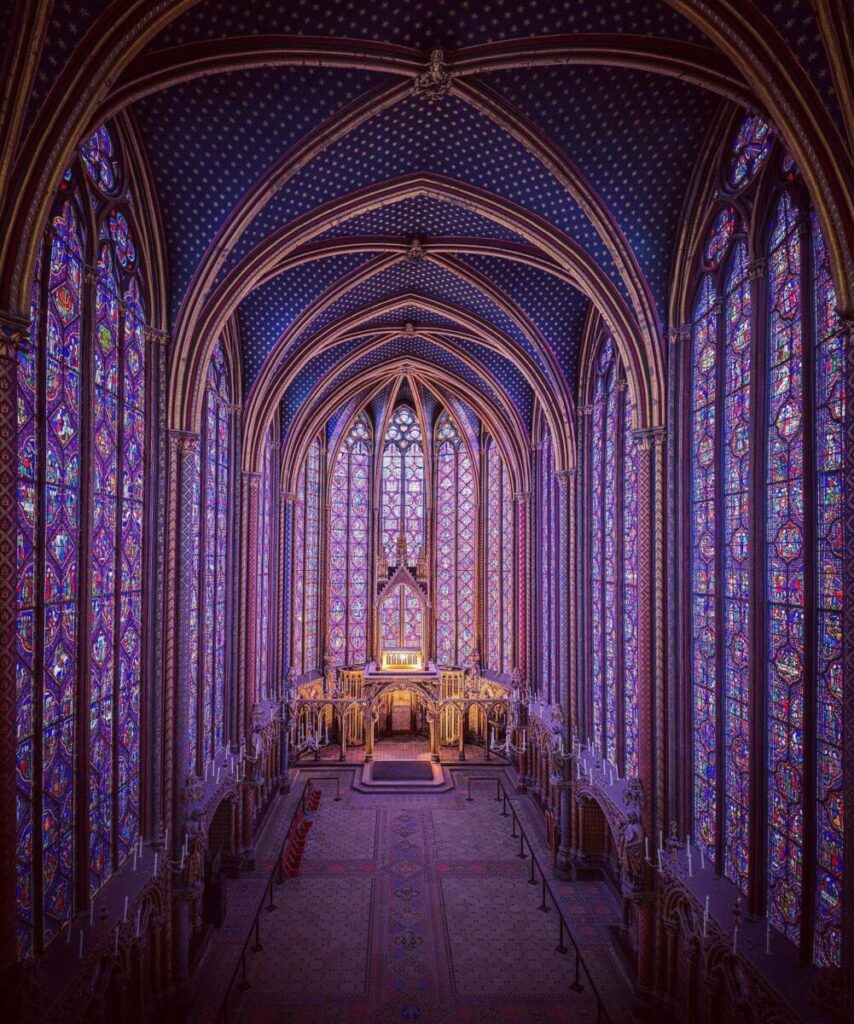
The chapel is famous for its upper level, where 15 towering stained glass windows soar 15 meters high. They depict over 1,000 biblical scenes, from Genesis to the Passion of Christ.
Light pours through in a kaleidoscope of blues, reds, and purples, giving the impression that the stone walls have disappeared.
The lower level is plainer, originally serving as the parish church for palace staff. Some visitors are caught off guard when they first enter, thinking that the ground floor is all there is to see. The real marvel lies upstairs, so head straight for the narrow staircase.
A relic once kept here, the Crown of Thorns, added immense prestige to the chapel. Though the relic is now housed in Notre-Dame’s treasury, Sainte-Chapelle remains a powerful symbol of medieval devotion and royal authority.
Crowds and Waiting
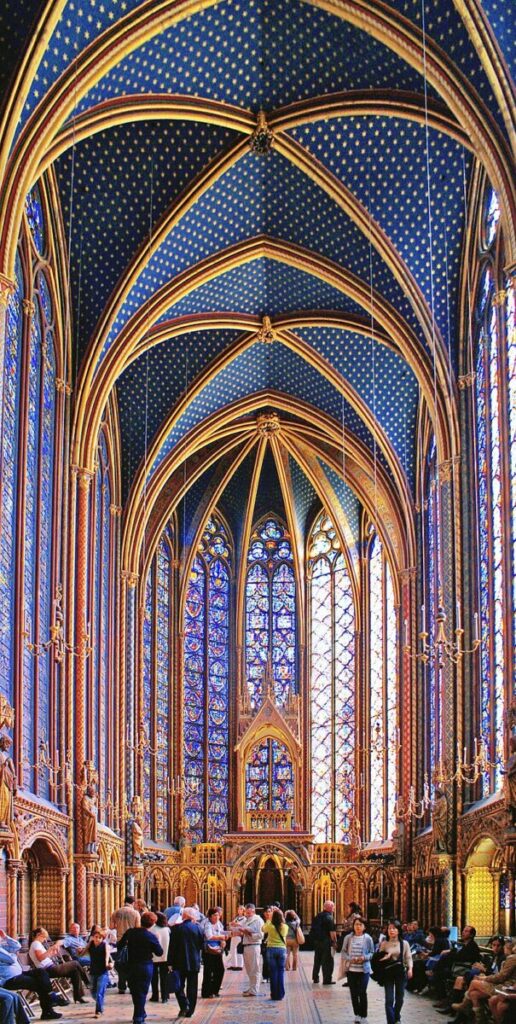
Experiences at the entrance vary widely. Some people describe waiting up to three hours without a reservation, while others walk in after only 15 minutes.
Several report that even with timed-entry tickets, they still stand in line 30–40 minutes, especially during peak travel months. Security checks also slow things down.
Some visitors get lucky: on a Sunday afternoon in late August, one visitor joins a free guided tour with almost no queue at all. Someone with a 9am reservation is the first inside and enjoys five minutes nearly alone in the upper chapel.
The lesson is clear: timing makes all the difference. Those who arrive early – by 8:30 for a 9am entry – often find the experience quieter. Weekdays, especially Mondays, can be very busy. Shoulder season months sometimes bring lighter crowds.
Concertgoers benefit from a dedicated line. If you book an evening chamber music concert, you skip the main queue and head straight inside at the designated time.
When to Visit for the Best Light
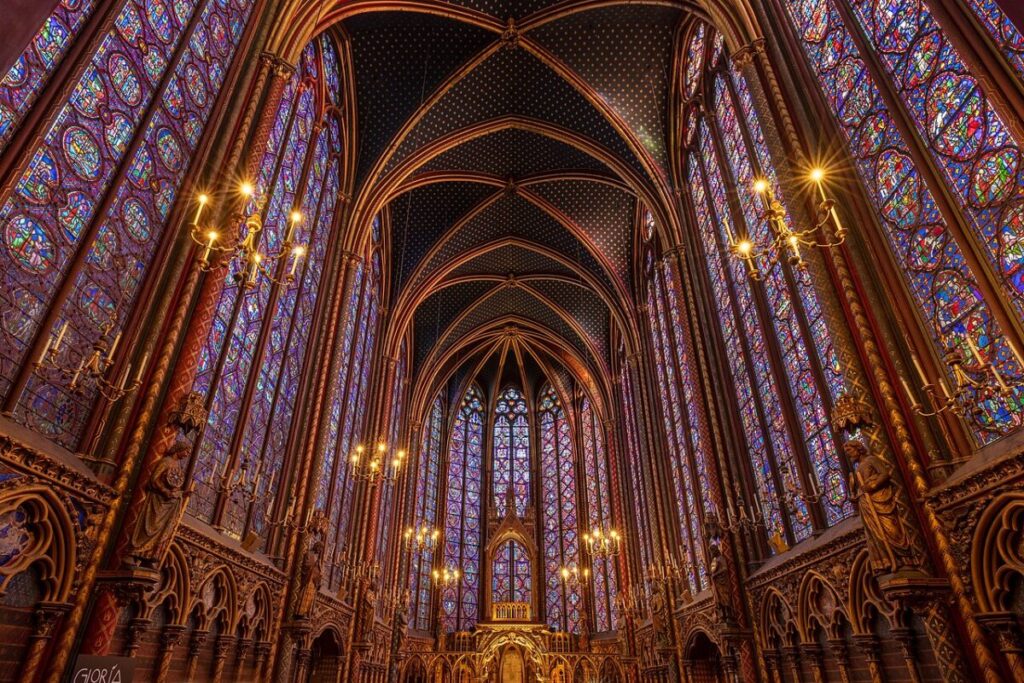
A sunny day transforms the interior. Visitors repeatedly say that cloudy or late-day visits make the windows look muted, while bright morning light fills the chapel with dazzling colors.
Arriving in the morning not only beats some of the crowds but also gives the clearest light.
What You’ll See
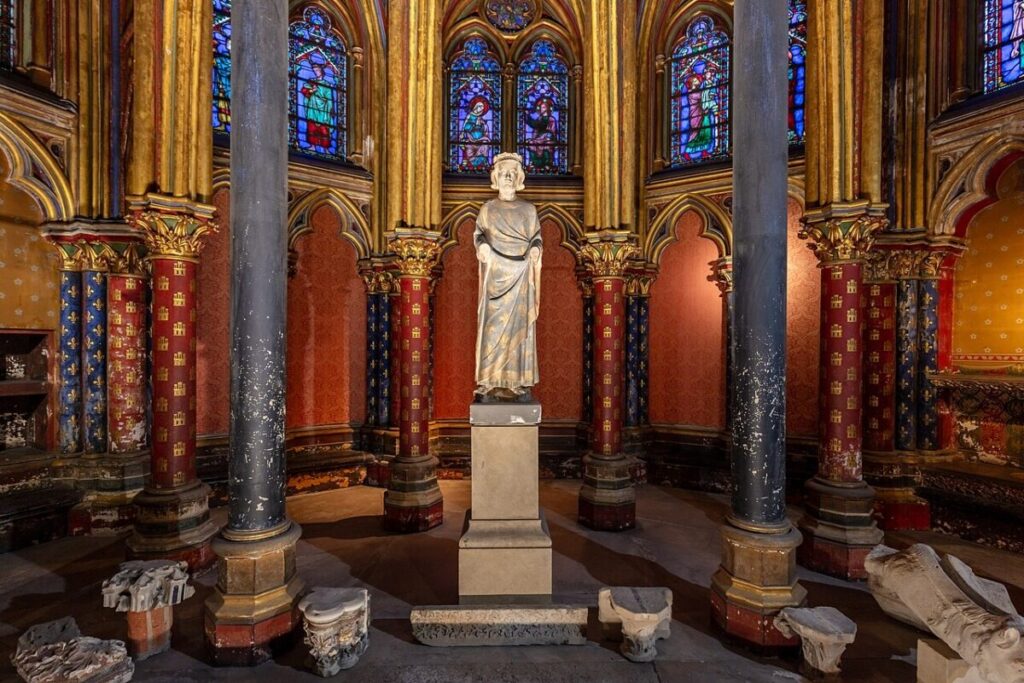
The chapel recently underwent extensive restoration. Conservators used mirrors to hide scaffolding in a clever and discreet way. As of the date of this writing, the scaffolding has come down, leaving the glass unobstructed.
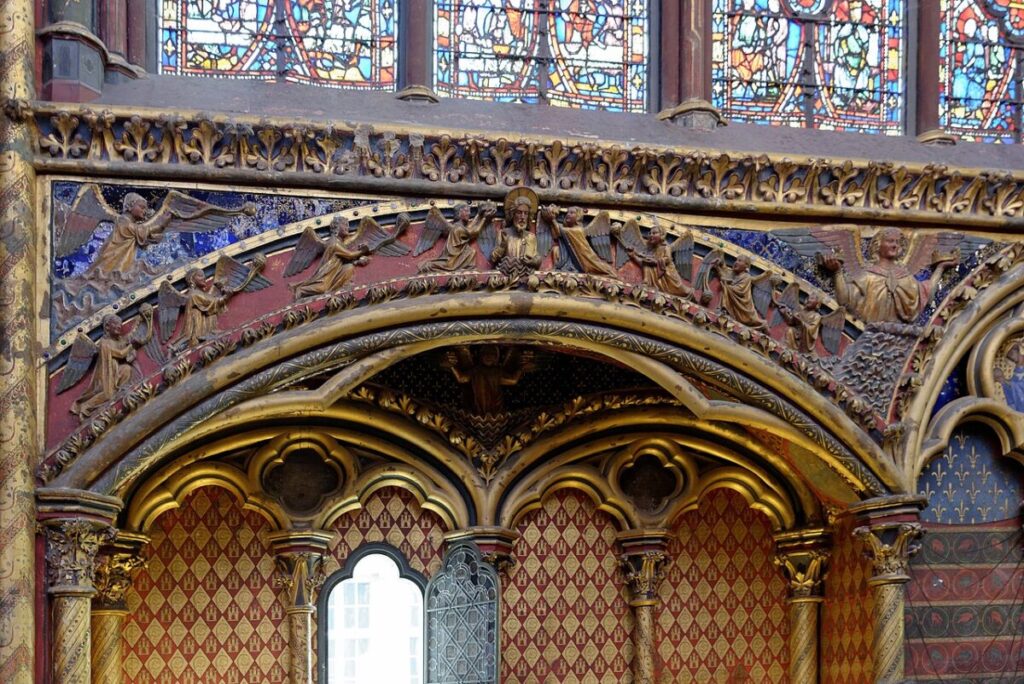
Look for the rose window above the entrance, added in the 15th century. The delicate tracery and scenes from the Apocalypse make it one of the great Gothic roses of Paris.
Pay attention also to the fleur-de-lis and castles painted on the lower walls, symbols of France and Castile representing Louis IX and his mother.
The Concert Experience
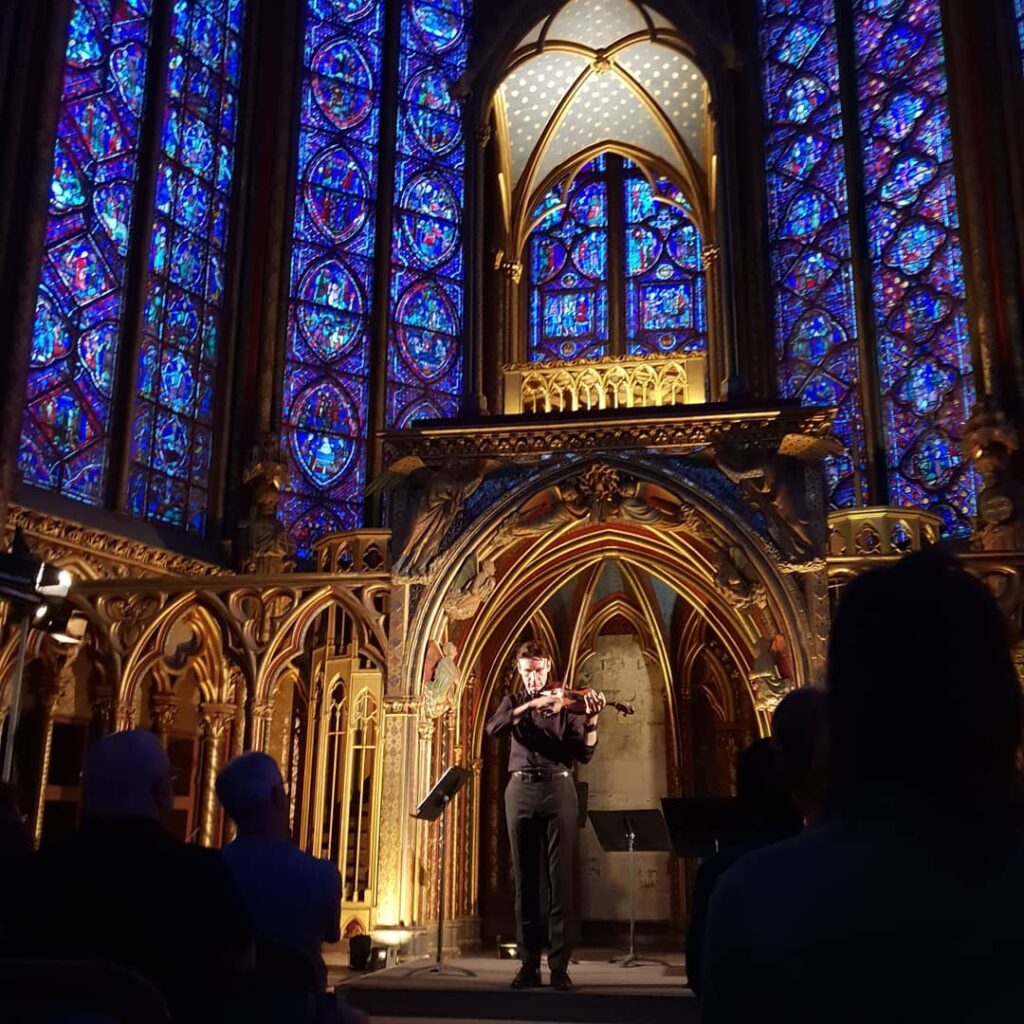
Sainte-Chapelle doubles as a concert hall, and many say this is the most memorable way to experience the space.
A popular choice is Vivaldi’s Four Seasons, performed by a quintet with a standout lead violinist. Bach concerts by candlelight are also remembered as magical and romantic.
Note that sunset timing is important. You might book an 8pm concert in the fall, expecting to enjoy the stained glass in full glow, but by the time you enter the sun is behind the buildings and the windows are already dark.
Summer dates, with longer evenings, are better if you want to hear music while still seeing the glass illuminated.
Why Saint-Chapelle Stands Out
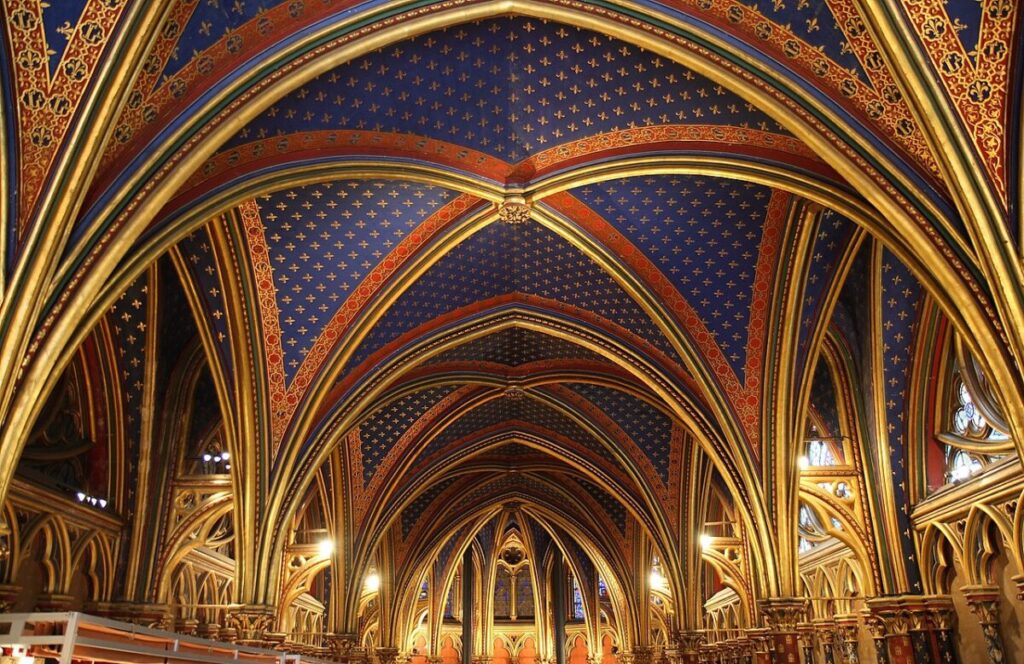
Many visitors say it is even more impressive than Notre-Dame. Others call it the most beautiful monument in Paris. For some, the experience is so moving it brings them to tears.
Note that if you want a quieter experience, there are other chapels in Paris that echo Sainte-Chapelle’s design. The Sainte-Chapelle in the Château de Vincennes is far less crowded. Saint-Séverin, near Notre-Dame, also offers striking Gothic architecture and stained glass.
Practical Info
Sainte-Chapelle sits inside the Palais de Justice complex on the Île de la Cité, just a short walk from Notre-Dame and the Conciergerie. The entrance is on Boulevard du Palais, through a security checkpoint for the courthouse grounds.
Tickets cost around €13 per adult, with reduced rates available. Entry is free for EU residents under 26 and often included in the Paris Museum Pass.
Buying online in advance is highly recommended to avoid sold-out slots. Concert tickets are separate and usually range from €25-€60 depending on the performance and seating.
Opening hours: from April to September, it’s generally open daily from 9am to 7pm. From October to March, hours shorten to 9am to 5pm. The chapel closes on January 1, May 1, and December 25. Last entry is about 40 minutes before closing.
The nearest metro stop is Cité (Line 4). Saint-Michel (RER B and C, Line 4) is also close, and Châtelet–Les Halles is within a short walk for multiple metro and RER lines.
